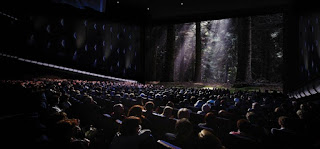Mistaking Science for Magic … or Not
Estimated read time | 2 min
Ancient Scandinavians had an interesting tradition where in order to make their weapons of war stronger, they would infuse the bones of the dead into their smithing practices. Bones from dead warriors, from their ancestors or animals they respected or venerated, for them it was a form of Magic.
This respect for nature and for the ancestors was widespread not only in early Indo-European
societies but most primitive civilizations around the world, there has always
been a connection between the living, nature and the world of the dead.
Did their Ancestors help them in battle?
This would be the premise of the practice, the idea that
somehow the essence of their loved ones or of other strong warriors, part of
their communities shared a piece of themselves in battle, indeed making
their swords stronger.
There are multitudes of journals, archeological findings and
anthropological evidence which confirm this relationship between their outlook
on the world of the 'living' and the ‘otherworld’, the smithing traditions for Scandinavians as for
other early cultures were entrenched with ritualism and the concept of
‘infusion’ as any other alchemical process would imply.
Was it all mere coincidence?
What we are looking at here is an issue of causality, they were looking forward to ‘infuse’ their weapons and in their belief and devotion you could say that the universe ‘conspired’ to make it happen.
The definition of ‘Magic’ is to -will- an intention into
physical reality and the swords of the Vikings were not an isolated case,
multiple societies with many more forms of ‘infusions’, alchemy, rituals etc.
involving an act of will, an act of consciousness to produce a result in the
physical world have been recorded studied and archived in the fields of
anthropology, theology, philosophy and alike.



